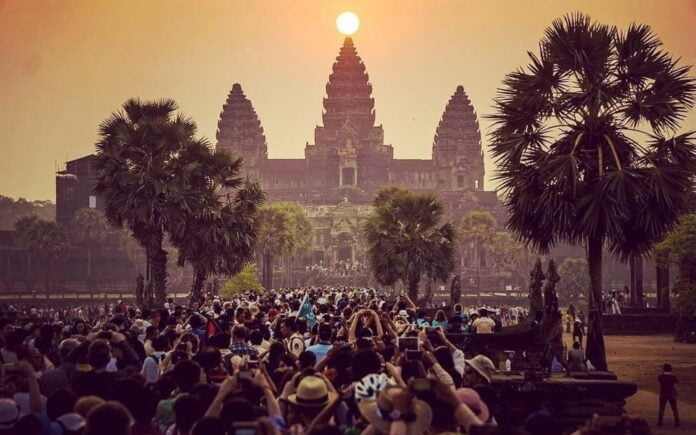Whether you’re seeking a meditative moment to begin the day, a unique photograph as a souvenir of your visit to Siem Reap’s ancient temples or an adventurous escape from the city, we have ten perfect sunrise spots to explore. Take in the morning sun as it blankets temples, rice paddies, villages and fields of lotus flowers in a golden, ethereal light. The views will more than make up for the early wake-up call.
Several of our recommended sunrise spots require a valid Temple Pass. While the ticket office opens at 4.30am, purchasing your ticket the day before your sunrise visit will spare you valuable time in the morning.
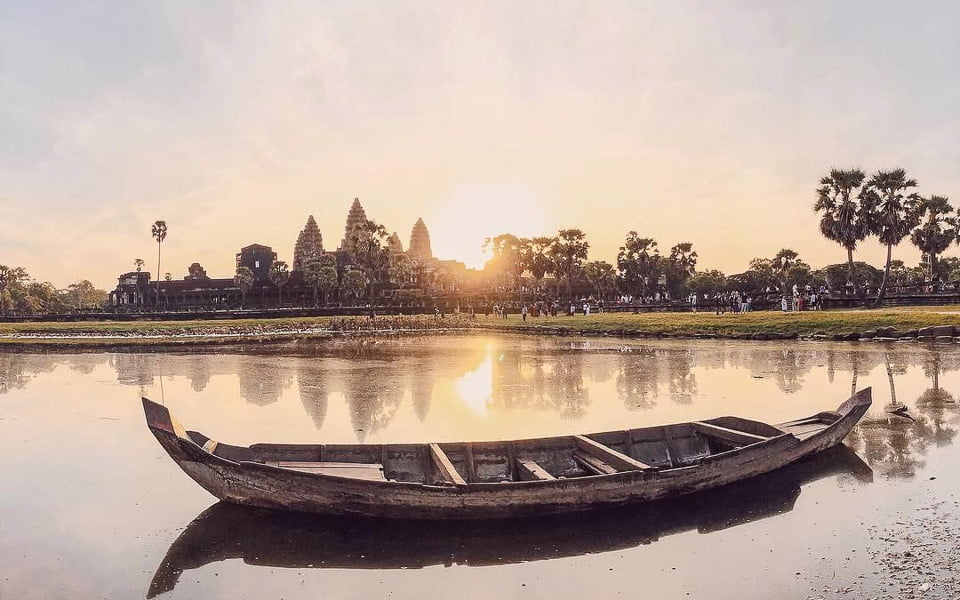
Get there early, ahead of the crowds arriving by the bus load. Position yourself behind the reflection pools, allowing the spectacle of the temple itself, and the dramatic colours of the sky to appear mirrored in the water as the sun rises. Capture the iconic sight on camera or simply be in the moment, taking in the view of the world’s largest religious site in its splendour, shrouded in the ever-changing hues of the rising sun. You are likely to be sharing the experience with several thousand jostling tourists, with cameras poised, but visit in the less crowded rainy season (May – November) and you’re typically treated to a more stunning sunrise, too.
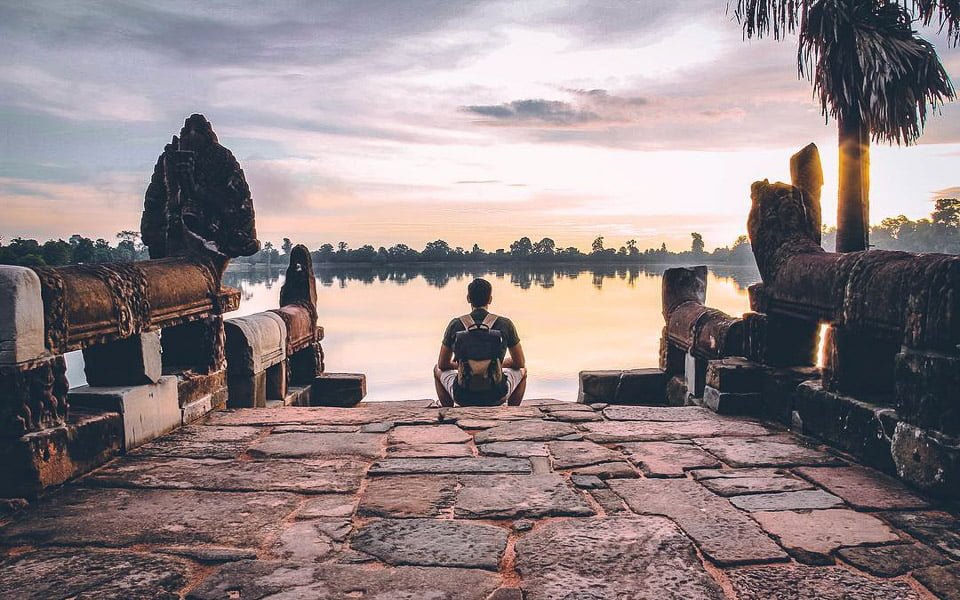
Inside the archaeological park, to the east of Angkor Thom and south of East Baray, lies a reservoir once used for city dwellers’ daily ablutions, dating back to the 10th Century. The pond’s large embarkation terrace is the ideal place for witnessing a spectacular sunrise, and you’ll be rewarded for your early start with a reflection in the waters, which never dry up, even in the dry season. Few tourists venture to this 700 metre-long man-made ‘baray’, lending itself well to a peaceful daybreak experience.
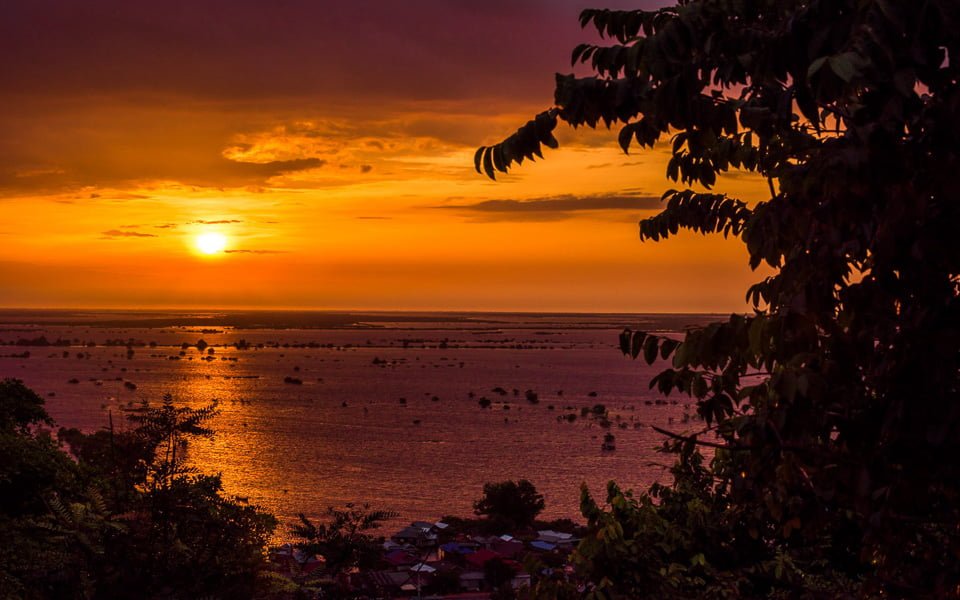
From the summit of this 140 metre high hill, home to 10th Century temple Prasat Phnom Krom, you are treated to a visual feast after the challenging climb up the rocky path. As your eyes adjust from darkness to daylight, the serene and still sight of endless rice fields comes into view. You can look out over Tonle Sap Lake and even West Baray. The sun’s appearance brings the villagers out to the fields for their day’s work, and the scene unfolds slowly beneath you. Located 12 km southwest of Siem Reap, you’ll need to allow half an hour’s drive and ample climbing time to reach the peak in time for Mother Nature’s morning performance.
4East Mebon
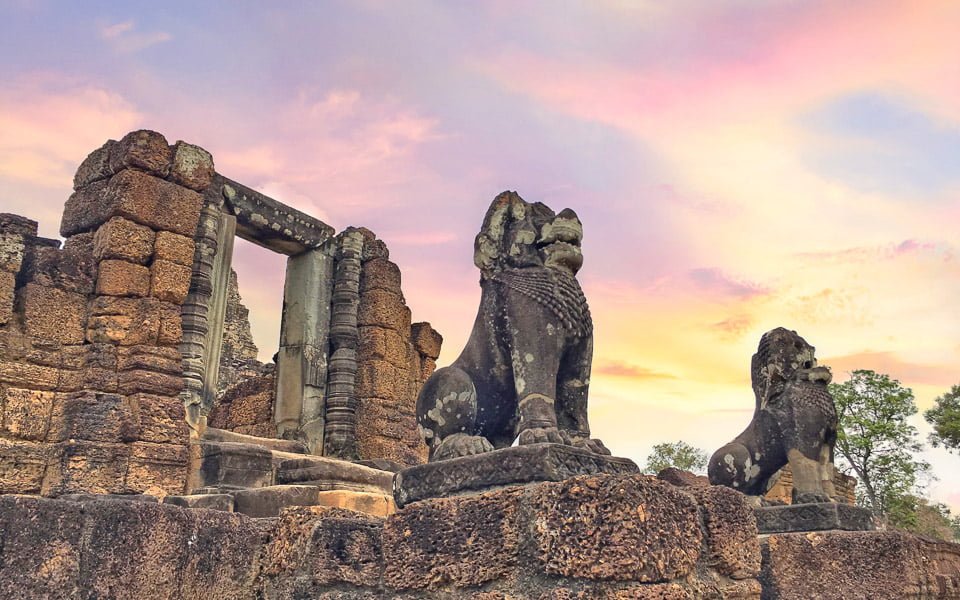
On a man-made island in the centre of what was once East Baray reservoir lies a 10th Century Hindu ‘island temple’ (Mebon) dedicated to the parents of King Rajendravarman II. Long since dried, the baray is now cultivated land, so the beautiful views you’ll see from atop the temple will be of the thriving rice paddies and villages below. The landing stages, however, are a reminder that the temple was once only accessible by boat. Allow more time than usual to reach this viewing place, since it is a little further afield than the other Angkor temples – ideal for escaping the throngs of temple-goers at the more well-known sites.
5Siem Reap Countryside
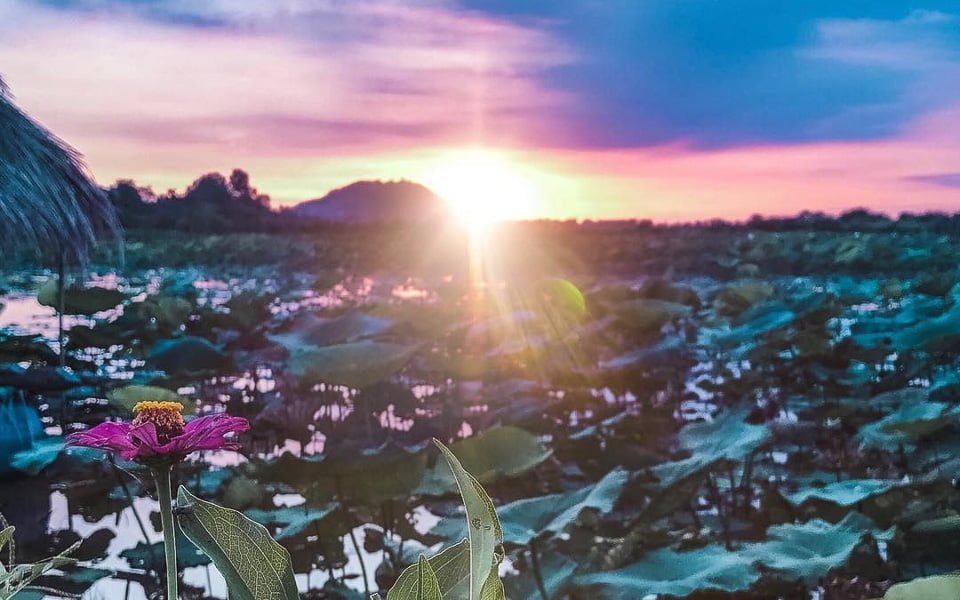
Siem Reap’s surrounding countryside and villages provide ample opportunities for catching a sunrise vista away from the more popular sites on the beaten track. Taking a breakfast picnic and a drive on Road 63 in the direction of Phnom Krom will lead you to several lotus farms, offering picturesque and quiet surroundings to soak in the morning sun making its appearance. Wooden huts on stilts over the lotus fields add a rustic charm to the photogenic scene. Several cafés looking out to rice and lotus fields open later in the morning along this stretch of road, such as Lotus Farm by Samatoa, which also runs free guided tours of the farm to complete your morning.
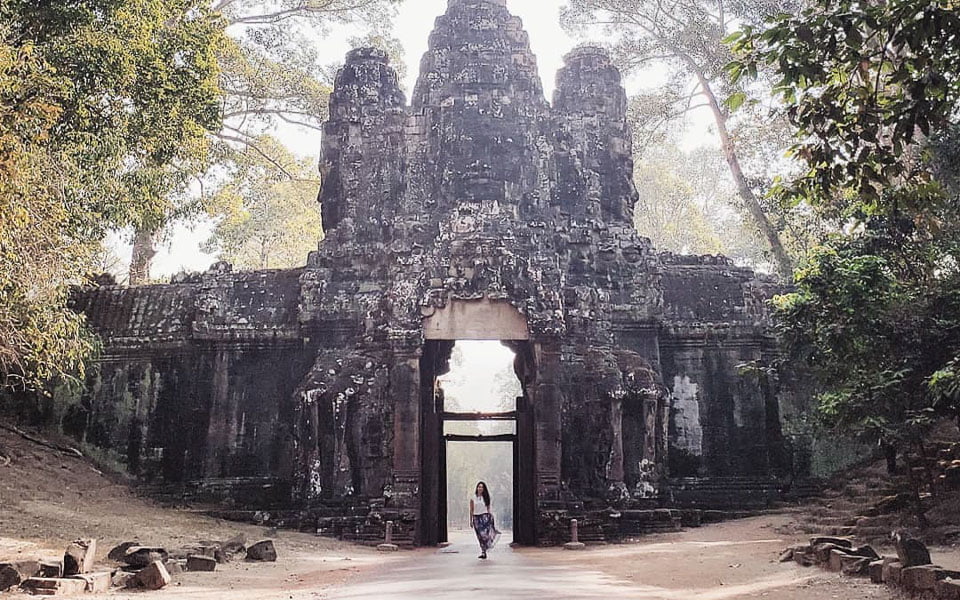
Of the five gates that open into Angkor Thom (Great City), a fortified royal city encircled by a moat, entering by the South Gate will avoid large crowds. Head to the south east corner for the best vantage point for watching the day break. Orientated towards the east are corner shrines, or Prasat Chrung, in cruciform with a central tower, lending your sunrise photographs an element of inspiring 12th Century Bayon-style architecture.
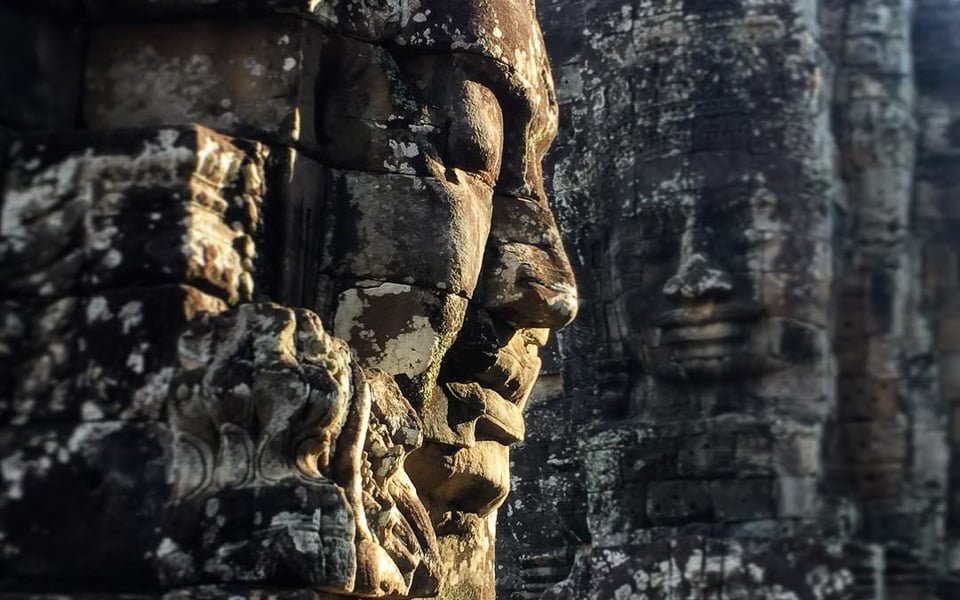
Standing squarely in the centre of King Jayavarman II’s capital city, Angkor Thom, you’ll find The Bayon temple, decorated distinctively with 37 remaining towers featuring a total of 216 giant, smiling, stone faces. Bathed in the warm, fleeting glow of sunrise, the faces make an artistic photo opportunity, as do reflections in the moat surrounding Angkor Thom itself, if you are visiting in the rainy season. You’ll be joined by just a handful of like-minded early risers, vying for an exclusive shot of the sun rising and enjoying the relative tranquillity of The Bayon, leaving the masses behind at Angkor Wat.
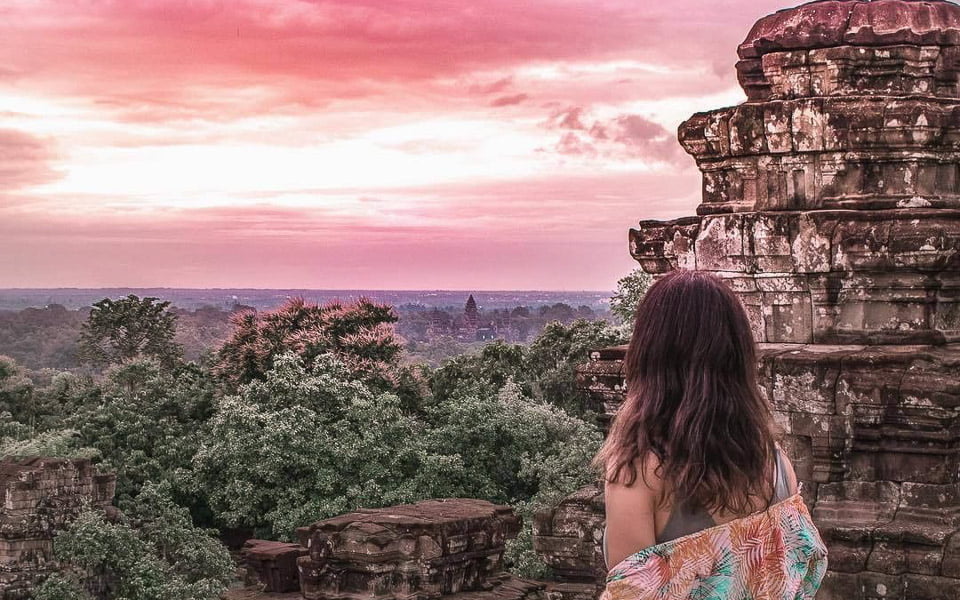
Climbing the 60 metre high temple mountain, located 400 metres south of Angkor Thom, rewards you with breathtaking views. Take care as you navigate narrow and steep steps to the temple’s highest terrace. Mesmerising views over West Baray from the terrace’s north west corner make this a very popular sunset pilgrimage, so it is un-rushed and quiet at dawn. Watch the sun make its dazzling ascent and take in the sweeping views, which include Angkor Wat, over 1km away to the south east.
9Equinox at Angkor Wat
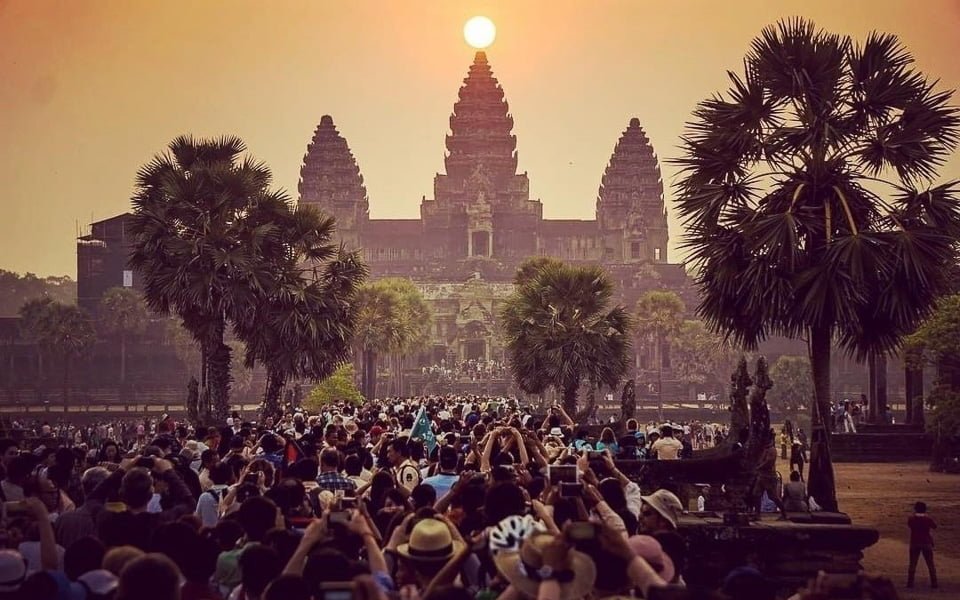
Timing your visit with the equinox is a fantastic way to admire the sun rising exactly behind the pinnacle of Angkor Wat’s distinctive central tower. Occurring in March and September, the equinox is a natural phenomenon, marking the beginning of spring and autumn, when the length of day and night become equal. Considered to be the temple’s most sacred point, the central tower stands at an impressive 65 metres, and makes for a spectacular sight. Be in awe of the design of the Angkor Wat structure to be in line, exquisitely and so precisely, with the twice-yearly celestial event.
Few people realize that Angkor Wat’s East-West axis is slightly off by 2-3%. This means that if you’re hoping to capture the perfect sunrise directly over the main tower, it’s best to visit one or two days before or after the official solstice dates, depending on the time of year. Your tour guide will always know the ideal timing to ensure you get the most stunning view.

